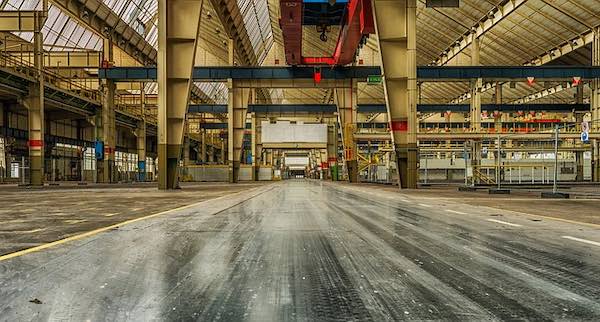The definition of 'engineer', as per Google, is "a person who designs, builds, or maintains engines, machines, or structures". While most, if not all, would have agreed with said definition some one-to-two decades ago, many today would argue that this definition is very outdated.
As an industry, engineering is changing at a rapid pace as we become more and more reliant on emerging technologies and the many benefits they, alongside other 'elements' of the digital age' bring with them. With many new developments, inventions, and start-ups coming thick and fast week in, week out, there has never been a more exciting time to become an engineer.
The IoT, automation, 5G, and other emerging technologies are changing the way engineers work and have several applications to the design and manufacturing processes.
The Internet of Things (IoT)
The IoT is steadily changing the world and engineering is an area where it has made serious waves.
Let's take the general manufacturing process as an example. The IoT replaces the more contemporary approach to factory management with one that is entirely digital and more productive, where all processes within a manufacturing ecosystem work together as one single interconnected system driven by data; it connects all assets and allows them to communicate to improve efficiency and safety while lowering costs.

A view of a large and modern city at night. Image credit: Pixabay.
When all manufacturing assets and processes are working together, all their operations can be monitored and managed by engineers from a single system where data is presented in a structured manner on the entire manufacturing flow.
This allows engineers to identify and learn about weak spots and inefficiencies, manage supply based on current market data, speed up or slow down processes, and, overall, design a better product—because everything is tracked from start-to-finish, an IoT ecosystem can provide you with vital information that can be used to develop products and deliver a better user experience.
Automation
Industrial automation—and, indeed, automation in general—is something that people either love or hate. To some, it is the key to a more precise and reliable manufacturing process. To others, it is out to steal their jobs.

A warehouse. Image from Pixabay.
Whether you love it or hate it, though, industrial automation is changing the face of manufacturing, and it is here to stay. Automation, alongside and working with the IoT, is going to play a pivotal role in smart manufacturing and digital transformation, with complementary technologies such as AI making a whole lot more agile over time. Again, one of the advantages here is a better product—automation means that occurrences of human error are reduced or eliminated entirely, with human input coming from engineers tasked with controlling the machines carrying out production.
Automation can also create enhancements in both design and manufacturing through data gathering, product simulation, and predictive maintenance.
5G
2019 is looking to be the year when 5G finally comes to market. Just like IoT and automation, IoT and 5G can work together to improve design and manufacturing processes for engineers.
Currently, one of the biggest pain points for the industrial IoT (IIoT) are connectivity issues, especially where the 'things' that form an IoT ecosystem are spread apart far and wide. With the deployment of 5G, however, engineers can begin to build device ecosystems that are highly interconnected—much more-so than current device ecosystems—to aid productivity, streamline process operations and maintenance, and expose reliability issues.
There is a catch, however. Successful 5G deployment would require a true global standard that requires connected devices to use the same protocols for reliable connections, high capacity, and low latency. Otherwise, there is the potential for widespread problems and inefficiencies.
Making Engineers More Efficient
With the likes of the IoT, automation, and other emerging technologies are integrated into the manufacturing and design processes, they are lent more towards improved efficiencies and better end-products than anything else.
Where IoT and automation may be resisted by other industries, it is welcomed with open arms in the traditional engineering fields that correctly recognize just what they bring—better and more agile workflows.





